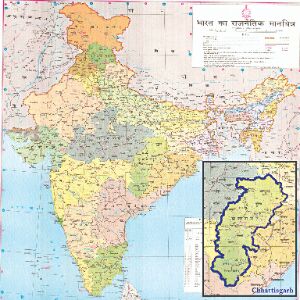Unanimity for the new state
Chhattisgarh was finally carved out of MP with bipartisan consensus between BJP and Congress, preceded by the endeavours of diverse local outfits

Even though the demand for Chhattisgarh was rejected by the SRC, it was revived again in the 1960s, especially, as the leadership of the Shuklas was contested by Khubchand Baghel. Baghel was a popular leader of the Mahanadi valley and had established the Chhattisgarh Bhratru Sangh (CBS), not only to give a distinct flavour to Chhattisgarhi dialect and culture but also for articulating the demand for statehood. In many ways, this was the revival of the Prathak (separate) Chhattisgarh movement of the 1920s. The objective of CBS was to ensure that the drain of wealth from this region to the larger entity of MP was curtailed, and preference in jobs and contracts was given to locals. The CBS argued that in terms of education and entrepreneurship, the region was a laggard. It emerged as a major force in the Mahanadi valley. One must also refer to the Chhattisgarh Samaj, an organisation formed under the umbrella of the Proutist Sarva Samaj — an institution devoted to the development of political, social and cultural consciousness of Chhattisgarh. Since the late 1960s, the Samaj had been publishing a weekly newspaper in Chhattisgarhi. Like the Chhattisgarh Mukti Morcha (CMM), it had been fielding candidates in the Chhattisgarh elections, but could not make a significant impact in electoral politics.
Meanwhile, one needs to discuss another mass movement led by the intrepid Shankar Guha Niyogi — started as a trade union movement in Bhilai, where in addition to the Bhilai Steel Plant, there were over a dozen big industries, and hundred steel-based industrial units. The conventional trade unions had left out the contract workers, and their affiliation to the political parties — (INTUC with Congress), (AITUC with CPI) and (CITU with CPM) — always made it possible for the management to engage with the highest echelons of the political parties, thereby reducing the negotiating ability of the local units. Niyogi was an organic intellectual on the lines of Gramsci, but was serially thrown out of the CPI, CPM and CPM ML as his grassroots style of politics which included — prohibition, primary schools, women's issues, working in collaboration with civil societies and supporting constructive work — was an anathema to the conventional communist politics. His concept of a Chhattisgarhi was 'one who lives in the geographical region of Chhattisgarh, earns his livelihood through honest work, and is dedicated to the cause of emancipation of Chhattisgarh. He also sought to unite the peasants with the workers, hence the red-green flag of the CMM; the organisation of Chhattisgarh Mahila Mukti Morcha (CMMM) for women's emancipation; and equal participation were another of his priorities. He also started the tradition of observing the date of Shahid Veer Narain Singh's execution by the British as Martyr's Day. The idea was to evoke a sense of pride and conviction in one's own ability to affect change. While he did not make non-violence the credo of his movement, he was veering towards Gandhian ideology concerning the empowerment of self and the community. "CMM's notion of a new Chhattisgarh for a new India resembles Gandhian notion of the Indian state as the outermost circle of several concentric circles with the individual at the centre and the village as the innermost circle". CMM did enter electoral politics, but could not make a dent in the salience of INC and BJP in the state.
In the late 1980s and early 1990s, Chandulal Chandrakar of the Indian National Congress formed a bipartisan political forum known as Chhattisgarh Rajya Nirman Manch. This forum successfully organised regionwide bandhs and rallies, which were supported by major political parties including the Congress and the BJP. By this time, BJP had let go of its reservations with regard to small states. It felt that the grassroots work done by the Vanvasi Kalyan Ashram would ensure electoral success in the new state in which tribals made up one-third of the overall population. In fact, there was one-upmanship between the BJP and the Congress on whose support for the new state was stronger.
The Congress government of Madhya Pradesh under Digvijay Singh took the first institutional and legislative initiative for the creation of Chhattisgarh in March 1994. Four years later, the NDA-led Union Government drafted a bill for the creation of a separate state of Chhattisgarh from 16 districts of Madhya Pradesh. This draft bill was sent to the Madhya Pradesh Assembly which approved it unanimously, albeit with minor modifications, and after the approval of both the Lok Sabha and the Rajya Sabha, the President of India gave his consent to The Madhya Pradesh Reorganisation Act, 2000 on August 25, 2000. The first day of November was designated as the 'appointed date' for the establishment of the new state of Chhattisgarh.
While both the BJP and the Congress had supported the formation of the state, the contest for the position of the first CM was bitter. While the Congress had 48 seats as against BJP's 36 in the 90-member house, the Congress was a house divided with VC Shukla, a lead contender, staying away from the swearing-in ceremony after his last-minute attempt to cobble an alliance with BJP failed. Jogi's tenure was quite controversial, both on account of the controversy regarding his status as a tribal, his SC certificate and his involvement in a political murder.
The writer is the Director of LBSNAA and Honorary Curator, Valley of Words: Literature and Arts Festival, Dehradun
Views expressed are personal



